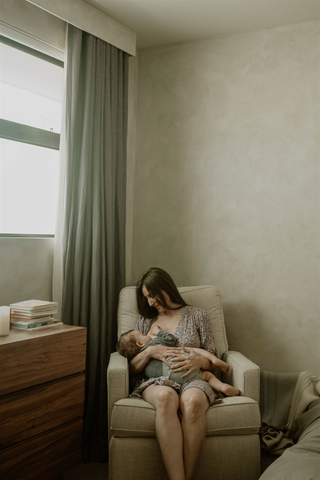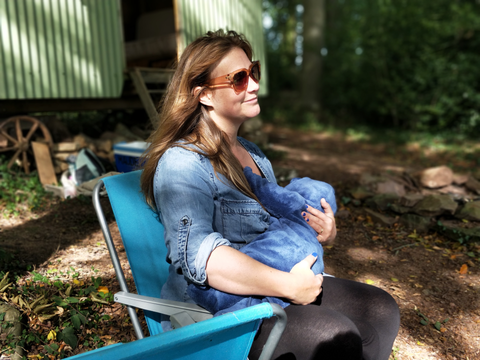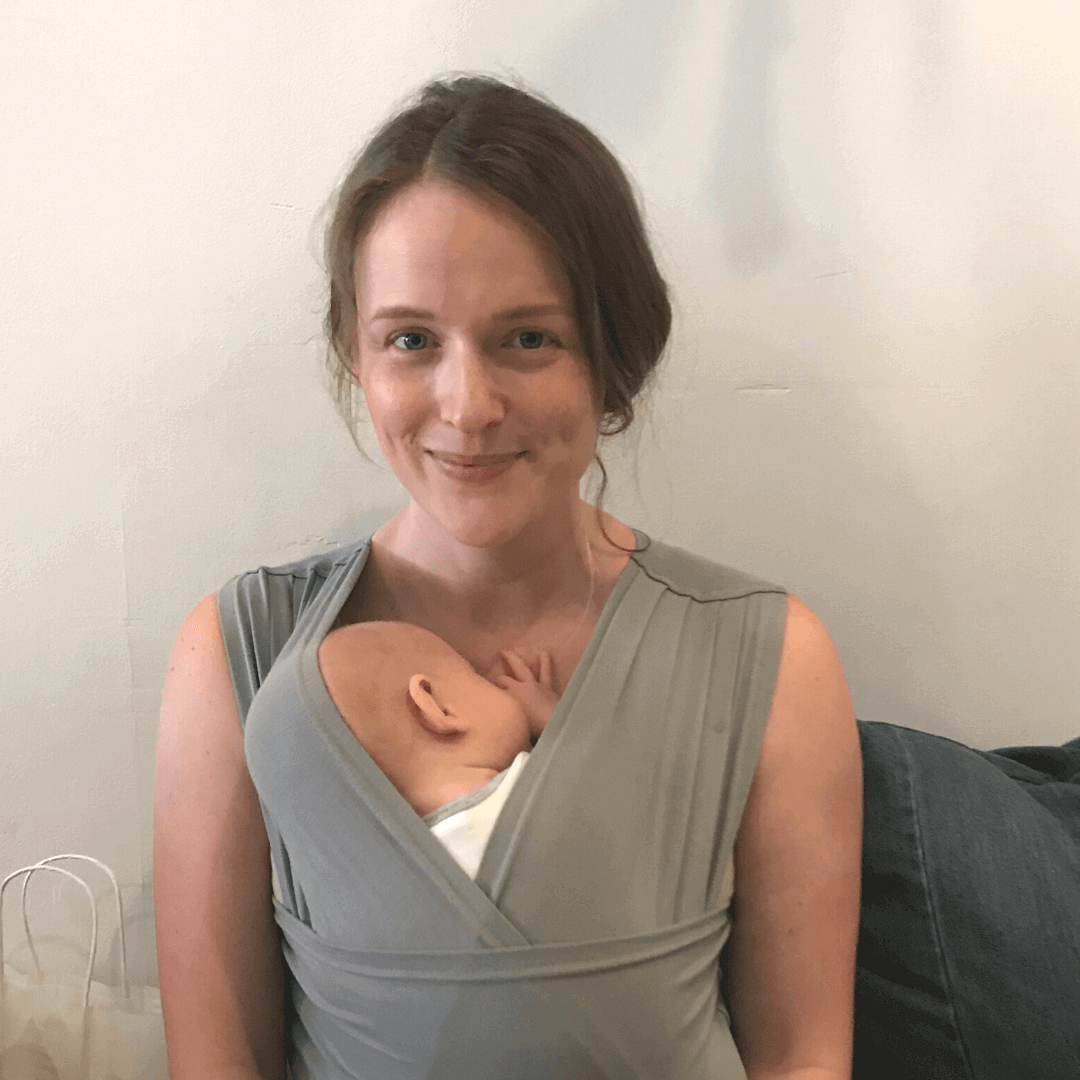Trigger warning: positive experiences of breastfeeding described.
The hard thing about sharing breastfeeding experiences is that, like birthing, they’re all vastly different. Every mother’s breastfeeding journey is unique, and no path is more valid than another. While I’m sharing my own experience, I recognise that each mother’s story and choice will differ. Remember, there isn’t any ‘right’ way to approach motherhood or breastfeeding; the connection between a mother and her child remains strong, regardless of the path chosen. There are also many, many mothers who struggle deeply with their breastfeeding journey or cannot feed for other reasons, while some mothers choose not to breastfeed. And still others struggle to fall pregnant at all (this was my journey also). This isn’t meant to diminish their individual and collective challenges. My goal here is to share my story in the hope that it inspires yours in some way. In the words that follow, I’ll be sharing my personal experiences, interwoven with more general observations and relevant statistics. I’ll also share links to more information or templates you may find useful.
My personal breastfeeding journey
As a quintessential researcher, my journey had me reading books, listening to podcasts and buying a fake baby just to make sure I could practice breastfeeding positions. Yes, you read that right. And if that weren’t enough, my preparation also included massaging my breasts for an hour every day from 37 weeks to express colostrum in the event it was needed postpartum, and having a lactation consultant visit me before I gave birth.
The hospital experience
Then came the actual baby. By the second night in hospital, I was in tears. Despite all my preparation, the kid just would not latch. I’d heard of these maestro babies who popped out with the latch technique of a one year old. But that was not mine. I’d describe his technique as lollypopping (or lollygagging) at best and mild licks at worst. One midwife came in and tried to shove him on the breast rather roughly, only to leave us both sobbing. Still, I persisted, my husband and I writing the amount of time he fed, up on a tiny whiteboard in our maternity ward room: 4 mins RHS, 3 mins LHS and so on, twenty-four-hours-a-day. Anything longer than a few minutes was a miracle. We relied on my stored colostrum to feed him when he was hungry, but unable to latch. The nursing staff couldn’t find it until they realised I’d brought so much it had its very own freezer drawer! I wasn’t sure whether to be embarrassed or proud about that, so I went with proud.
The first few weeks at home
Four days later at home, my breasts were red raw, with searing pain during each letdown. And this was after consulting with three midwives and two lactation nurses. Two weeks after that, my nipples were cracked and bleeding. By the fourth week, my breasts were sore, but my nipples had healed. At the eight-week mark, I couldn’t really feel my nipples anymore. (Eep! Don’t let this bit scare you! Think of it like taking guitar lessons and getting that callous on your fingers which allows you to play better.)

The moments that followed
So what about after all that? It was pretty darn magical. The sense of connection, the closeness, the ability to immediately comfort this little human I had created at any time, anywhere. Tired? No worries, here’s a nipple I prepared earlier. Grumpy? Booby’s the word little one. Sick? Your 24/7 milk concierge has arrived, young sir. Oh, you want your milk pre-warmed to exactly 37 degrees? Done.
One and a half years later, it’s still amazing. As I write this article, I’m breastfeeding, sitting on a hard, grey leather chair at Monash Emergency. We’ve been here for the last twelve hours after my son’s viral infection escalated into respiratory distress. For the last two days I’ve fed him like a newborn again. When he was dehydrated and he refused other liquids, the breast was the only thing that worked.
Don’t get me wrong, it’s not all sunshine and rainbows. The total tactile overload from having your nipples stimulated all day long in the early days or when they’re sick or having growth spurts, dealing with phases of breast refusal or biting, or managing issues like mastitis. On top of that, sleep deprivation, while lessened, continues for longer if you choose to co-sleep and breastfeed rather than night-wean earlier.
Yet overwhelmingly (for me personally), the majority of feeds are a calm oasis of indescribable connection. They are a chance to rest and reset, to reflect, to look my baby in the eyes and remind him just how much I love him. They’re a place to laugh, giggle, be silly, have fun and eventually, to have chats.
And no matter how you choose to feed, these times will become the markers of daily parenthood that you cherish and look forward to, the extension of your resilience as a mother, and the moments you will inevitably miss when they’re gone for good.

How self-education can empower your unique breastfeeding journey
You will often hear advice that goes something like this: “go with the flow and don’t prepare too much, because you can’t control the outcome.” And in some ways, that’s true. You may not be able to control whether you have a vaginal birth or an emergency c-section. You may not be able to control exactly how much milk you produce, or whether your baby has a tongue tie or not. But the one thing you can control is the effort you put in to educating yourself.
Some of the things that self-education gave me, was the knowledge to make sure I had a written birth plan or set of preferences, that included my strong desire to ensure the absolute first priority was for my baby to be at the breast within an hour of birth (here is my birth preferences document as a template if you’d like it). As a result, in that birth suite, I had one nurse advocating for me to a new shift nurse to let my baby crawl up to my breast, and not to touch, swaddle or clean him straight away. While for medical reasons this isn’t always possible, knowing that it often is, and being explicit about your wishes, is the best way to make sure it happens.
Educating myself also gave me the ability to say to one of the nurses on day four, “Hey, I know the night nurse said for me to pump to help bring my milk in, but I got 20ml in 20 minutes so I don’t think it’s a good idea to keep going as that could cause oversupply.” The morning nurse agreed. Or when we were offered formula milk to assist with bringing on my son’s first wee (and reducing potential jaundice), it gave me the confidence to ask for my stored colostrum instead. These examples mightn’t seem like much, but in those first, very vulnerable days as a new parent, ‘not much’ can mean everything.
Your milk is supposed to take days to come in after you give birth. During this time, it’s going to be hard and a little (or in my case, a lot) more frustrating for your baby to eat because colostrum is thick and doesn’t flow as well as milk does. But your milk will come, and babies are supposed to lose weight in the first week of life. Those two things aren’t pathologies, they are normalities. It can be hard to witness that struggle when all you want to do is give them everything, but knowing what is normal is part of what will help you feel empowered and able to cope with the tough stuff.
After all, once you’ve managed to bring your baby to life, if you choose and are able to breastfeed, one of your main jobs postpartum, is to figure out how your bodies fit together. And that can feel like a big job when there is no real way to train for it beforehand. We all want a sense of progress toward acquiring that skill. Thinking of it as a skill can be helpful, because it takes the pressure off feeling like it needs to be perfect from day one in order for it to work long term.
Luckily—once your milk arrives—your baby will be a twenty-four-hour-a-day feeding machine, giving you plenty of time to practice latch and hold techniques. I highly recommend these resources I have collated as helpful guides to these two things, especially if you don’t have access to a lactation consultant.
Where your nipple and breast sits, how your baby’s suck works, how and when they tell you they need to feed—it’s all unique to you as a team, together. That’s why even researchers call us ‘mother-child dyads’ (a pairing of a mother and baby who share a close biological, social, and emotional connection that influences their health and development). Our intricate and unique connection with our babies allows us to help regulate their heart rates and temperatures simply with our touch.

How to separate opinion from fact when it comes to feeding your baby
It’s useful to be aware that regardless of the path you choose to take, you might come up against opinions from others that may or may not align with your ideal breastfeeding outcome. The only way to know that—and to be empowered to push back on those opinions if you need to—is to decide what you actually want. Even if that means you don’t end up getting it, you have to know that you want it. In my case, apart from knowing I wanted to breastfeed, I also knew I hoped to do so for longer than was considered the average in Australia.
Here are a few breastfeeding opinions that were presented to me as facts. I didn’t listen to them and you don’t have to either if you don’t wish to.
-
You should night wean by 8 or 9 months as baby no longer needs the nutrition
-
You need to wean before they can speak or they’ll start demanding the breast
-
Once you introduce solids you should wean because it helps make them more independent
Independence, demanding toddlers, sleep deprivation—none of these things are mutually exclusive to breastfeeding. They happen regardless. They are a normal part of any child’s development.
OPTIONS FOR EXTENDED FEEDING
In some non-western cultures—such as Sri Lanka or the Pacific Islands—it is the cultural norm to breastfeed a child until they are three or four years old. How long you choose to breastfeed is exclusively your choice, but know that if you do wish to feed your child longer, there are tens of thousands of Australian women who are on that same journey, normalising longer-term breastfeeding.
I wouldn’t pretend to suggest this is viable for everyone, nor easy or even desirable if you have to go back to work early like many American mothers do. Systemic issues ranging from the length of maternity leave and pay rates through to how much support you get from your immediate family, are both large factors that can impact this. But it’s worth considering your options here. Remember weaning your baby onto food doesn’t automatically mean you need to wean off breastmilk.
In the early days, the help that was the most helpful to me wasn’t practical advice or opinions at all, it was encouragement, and self-belief. The “you’re actually doing this,” from a midwife named Meghan at 2am in the morning. The “I love everything you’re doing as a parent,” from my own mother, or the, “I’m totally in awe of you,” from my husband.

Every breastfeeding journey is beautiful and unique
My story isn’t everybody’s story. I have a wealth of privileges available to me, including that I run my own business and work from a home-based office, which has allowed me to always be available to breastfeed without ever needing to pump. I have also been in a financial position to do things like buy things like books, courses and to have access to lactation consultants.
LOCAL AND NATIONAL SUPPORT RESOURCES ARE AVAILABLE
If this is not the case for you, know that local councils often provide free lactation consultants, your MCH nurse or local council hotline can often provide detailed guidance also, while the Australian Breastfeeding Association provides free phone support 24 hours a day.
In contrast to my own experience, I also know of stay-at-home mothers who exclusively breastfed but preferred to pump and bottle feed instead, which works perfectly for them. For others, I have learned that sometimes no matter what they’ve done to make breastfeeding happen—genetic, physical or medical circumstances have made it impossible for them to start or to continue, which becomes a traumatic experience for them and a sensitive topic to discuss. And in some other cases, mothers legitimately choose not to breastfeed at all, which is 100% the right choice for them. You have the ability to change your mind. You can decide beforehand you don’t want to breastfeed, and change your mind after birth, or visa versa. There isn’t any “right” way to do motherhood or breastfeeding.

The numbers worth knowing on breastfed babies in Australia
Now there’s more to this than just ‘mother’s intuition’. For the numbers-driven parents among you, I hope you’ll feel deeply heartened to know, that with the right knowledge and education, most women (about 98% in fact, according to the Royal Australian College of General Practitioners), are physically capable of breastfeeding their babies as long as they are set up for success from the beginning.
As a woman whose body has been lucky enough to fall pregnant in the first place (whether naturally or via IVF), unless you have a known medical condition or otherwise, you have every reason to expect you will be able to successfully breastfeed your baby.
Now isn’t that a wonderful, initial confidence boost to have in your back pocket? In fact, to give you some numbers to back this up, in Australia, the latest numbers from the Australian Bureau of Statistics show, 88.6% of babies are still breastfed at two months postpartum. That’s about the time is takes for your milk supply to regulate itself. That, my friends, is the hard part done. Plus, 50% of babies in Australia are still breastfed at 12 months! While, according to the World Health Organization and UNICEF, that’s not as high as Rwanda’s rate of 86.9%, it is far higher than Britain’s less than 1% (which has its own cultural norms and barriers around this that are widely discussed and debated locally). This is not to compare for comparisons sake, but it’s something that we as Aussie Mamas can collectively feel incredibly proud of as a community.

Where to from here? Your breastfeeding journey
What I hope this shared experience provides for you, is a glimpse of all the beautiful things that are available to you, if you are wondering what your breastfeeding journey could be like. Because as much as understanding and being honest about the fact that breastfeeding can be hard is important, inspiring you to get through what are generally the short-term, early-days tough bits, with the knowledge that most women who breastfeed long term, do it because they genuinely, wholeheartedly love it—is just as important.
If you really want this, you plan for it and trust in your body’s impressive ability to sustain your bubba, you will have one of the most beautiful, unique experiences of your life. Whenever I feed my beautiful son, I’m grateful for the opportunity I’ve had. And I hope however you experience breastfeeding, you’ll feel inspired to share your own story, for other women to learn from and relate to or feel inspired by.

An important final disclaimer on information within this breastfeeding article
Remember that the information I share in this article is no substitute for the individualised advice that you may receive from your child health nurse, doctor, midwife or other healthcare worker. They are one person’s experience and not meant to represent the experience of anyone but that one person. Don’t be afraid to seek guidance from, and have conversations with health professionals about your questions, concerns or needs. You deserve to advocate hard for whatever it is you want for yourself and your baby.
Author, Michelle Bourke, is mother of one HUMAN (plus one fur baby!), and founder of Foresight ecommerce agency.
FAQs
What sources of information can I trust statistics for breastfeeding mothers?
In Australia, the Australian Bureau of Statistics, RACGP and RANZCOG are all reputable sources of local information on breastfeeding.
What information does the World Health Organization provide for breastfeeding?
The WHO provides global perspectives on and benchmarks for breastfeeding.
Is exclusive breastfeeding best for babies?
According to the World Health Organisation and UNICEF, yes, if possible, children should be exclusively breastfed for six months - it is considered the most important food. After six months, continued breastfeeding combined with solid foods is recommended, and to keep breastfeeding for as long as mother and baby desire after that. When to stop breastfeeding is a completely personal decision that only you can make.
Is breast milk always best for a baby?
Assuming you are able to produce breast milk and wanting to do so, breast milk is the best source of food for your baby until baby begins to eat other foods from six months. Infant formula should be reserved for use only on the guidance of your doctor.
What are the other health benefits of breast milk?
According to research, it improves your baby's immune system (source), reduces the risk of sudden infant death syndrome (source) and other common childhood illnesses. It may reduce the incidence of ear infections and gastrointestinal infections (source) while the act of breastfeeding can reduce the incidence of ovarian cancer (source), and breast cancer (source) in women.







Leave a comment (all fields required)